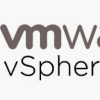I couldn’t find a good example of how to setup SIP trunk with CUCME/CME out there. Here is some information to help. I have a SIP trunk service from VoIP.ms to my lab.
Notes;
CUCME version : 8.6
DID number : 703 544 xxxx
Local IP Phone number : 1001
SIP server washington.voip.ms (208.43.234.226)
SIP username : x8xxxx
SIP authorization username : x8xxx
SIP PWD : 3edcvfr4#
Configuration
voice service voip
ip address trusted list
ipv4 208.43.234.226 !Current IP address for washington.voip.ms at the time of this writing.
ip address trusted call-block cause not-in-cug
gcid
clid substitute name
allow-connections sip to sip
no supplementary-service sip moved-temporarily
no supplementary-service sip refer
sip
transport switch udp tcp
asserted-id ppi
localhost dns:dns.name.of.your.device
midcall-signaling passthru
no call service stop
sip-ua
credentials username x8xxxx0 3edcvfr4# realm washington.voip.ms
authentication username x8xxxxpassword 0 3edcvfr4# realm washington.voip.ms
registrar 1 ipv4:208.43.234.226 expires 300
voice translation-rule 1
rule 1 /703544xxxx/ /1001/
!
voice translation-profile INBOUND
translate called 1
!
!This dial peer will match all incoming calls for an specific DID
dial-peer voice 1 voip
translation-profile incoming INBOUND
huntstop
destination-pattern 703544xxxx !Switch the # with your DID Number
session protocol sipv2
session target ipv4:192.168.55.100 !Your Call Manager IP Address
incoming called-number .
dtmf-relay cisco-rtp rtp-nte
codec g711ulaw
no vad
!This dial peer is for outgoing calls
dial-peer voice 2 voip
destination-pattern [2-9]..[2-9]……
session protocol sipv2
session target ipv4::208.43.234.226 !Your preferred server’s IP address
no voice-class sip early-offer forced
clid network-number 703544xxxx
dtmf-relay h245-alphanumeric
codec g711ulaw
no vad
!Incoming Dial-Peer
dial-peer voice 4 voip
session protocol sipv2
session target ipv4::208.43.234.226 !Your preferred server’s IP address
incoming called-number .
dtmf-relay cisco-rtp rtp-nte
codec g711ulaw
NAT / PAT
– SIP signaling : TCP or UDP 5060 (TLS 5060)
– RTP : UDP 10000 ~ 20000
As long as your CUCME IP is already configured with "overload", all traffic should be fine.
* debug ip nat sip
Tips and troubleshooting
1. Keep loose registration link
CME#show sip register status
Line peer expires(sec) registered P-Associ-URI
================================ ========== ============ ========== ============
1000 20007 1188 no
1001 20001 1188 no
1002 20003 1188 no
1003 20005 1188 no
1004 20006 1188 no
1111 100 1188 no
184953 -1 0 yes
2000 20008 1189 no
CME#show sip registration service
SIP Service is up
CME#show sip registration status
SIP User Agent Status
SIP User Agent for UDP : ENABLED
SIP User Agent for TCP : ENABLED
SIP User Agent for TLS over TCP : ENABLED
SIP User Agent bind status(signaling): ENABLED 192.168.55.100
SIP User Agent bind status(media): ENABLED 192.168.55.100
SIP early-media for 180 responses with SDP: ENABLED
SIP max-forwards : 70
SIP DNS SRV version: 2 (rfc 2782)
NAT Settings for the SIP-UA
Role in SDP: NONE
Check media source packets: DISABLED
Maximum duration for a telephone-event in NOTIFYs: 2000 ms
SIP support for ISDN SUSPEND/RESUME: ENABLED
Redirection (3xx) message handling: ENABLED
Reason Header will override Response/Request Codes: DISABLED
Out-of-dialog Refer: DISABLED
Presence support is DISABLED
protocol mode is ipv4
SDP application configuration:
Version line (v=) required
Owner line (o=) required
Timespec line (t=) required
Media supported: audio video image
Network types supported: IN
Address types supported: IP4 IP6
Transport types supported: RTP/AVP udptl
Tips
Your router handling NAT will need to support SIP inspection to properly rewrite the SIP Headers. These are usually calles SIP Application-Level Gateways (ALGs). This can be a CUBE or ASA or any 3rd party gateway that supports SIP inspection and rewrite.



 The www.ipBalance.com runs by a volunteer group with IT professionals and experts at least over 25 years of experience developing and troubleshooting IT in general. ipBalance.com is a free online resource that offers IT tutorials, tools, product reviews, and other resources to help you and your need.
The www.ipBalance.com runs by a volunteer group with IT professionals and experts at least over 25 years of experience developing and troubleshooting IT in general. ipBalance.com is a free online resource that offers IT tutorials, tools, product reviews, and other resources to help you and your need.

![[Splunk] – Basic search fields and commands logo_splunk.png](https://ipbalance.com/wp-content/uploads/2009/06/logo_splunk-100x80.png)
